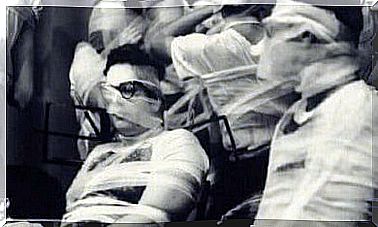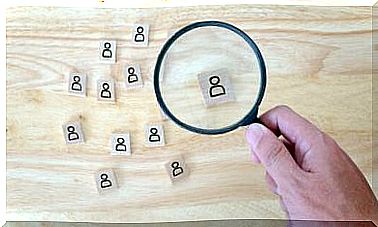Frustration: Fascinating Studies And Discoveries

The scientific literature is full of studies and experiments on frustration, an emotional state due to the reduction or repression of so-called gratifying stimuli. In general, frustrating situations have in common the presence of an apparently unsolvable problem or an apparently insurmountable obstacle.
Several researchers have conducted frustration experiments on guinea pigs and humans. The results revealed that in many circumstances the reactions are similar. This topic has often been the subject of studies all over the world since the 1950s.
There are many ways in which frustration takes shape in human beings. We can reduce it or eliminate it altogether through a rewarding stimulus, but we can also interrupt it, postpone it or put a person in a difficult situation, prolonged and, ultimately, without solution. All of this underlies the frustration studies. Let’s see some of them.

Economic frustration experiments
A frustration experiment was conducted in 2005 by Abler, Walter and Erk. On that occasion 12 volunteers were involved whose brain activity was studied by magnetic resonance imaging.
Participants were presented with a card with a symbol that they should then associate with one of the two possible answers. In front of them, each had a device with a button.
To give a certain answer they would have to press with their index finger; if they chose another answer, they would have to use the middle finger.
The mechanism was as follows : first of all they were told how much they would win by giving the correct answer. Three seconds later, the card with the symbol was shown and they would give their answer.
At the end of each year, the volunteer was informed of the amount of money he had earned. However, they were also told that they would receive the sum in case of correct answers equal to 60% of the total. If not, they would go home empty-handed.
Here is one of the frustration experiments whose goal was to identify the areas of the brain that are activated when you feel frustrated.
The conclusion is that in these conditions the insula and the right ventromedial prefrontal cortex are activated. Interestingly, these areas also actively participate in physical pain.
Frustration by Exclusion Experiments
Another frustration experiment was conducted in 2000 by Eisemberger et al. On that occasion, the element that triggered the frustration was social exclusion.
The researchers subjected the participants to an unpleasant stimulus: a plate that emitted heat. Volunteers were tasked with assessing the level of pain this object was causing them. Then, they were invited to participate in a video game that consisted of receiving and throwing a ball.
At that point, they were told to go play with the participants who were in different rooms, but the game was manipulated automatically.
A group of volunteers had been given permission to play the entire time, while others were interrupted after only 50 seconds due to a phantom flaw in the system.
A third group was told, however, that the computer was not working well and could not play. Once finished, all participants were asked to rate their level of frustration while participating in the game.
The data obtained were useful to observe that those with a lower pain threshold were also more sensitive to exclusion from play. The threshold was measured by the stimulus of heat. This data was then compared with the final questionnaire: a certain correspondence had emerged between the two.
Yet these data were not considered a confirmation of the actual relationship between sensitivity to physical pain and sensitivity to emotional pain.

General concluding reflections
Other frustration tests revealed similar responses to those described. Scientists have also conducted some experiments on newborns as young as four hours old, and the conclusions have always been the same: the deprivation of a stimulus of gratification always generates frustration. Consequently, this behavior is thought to be innate.
This means there is a lesson to be learned: frustration tolerance. We naturally react to displeasure with rejection and stress. To bear this situation with serenity, a full awareness is required.
In this way, the unpleasant stimulus will be managed on the basis of a value or a mediated expectation, that is, of an asset that will emerge at a later time.









